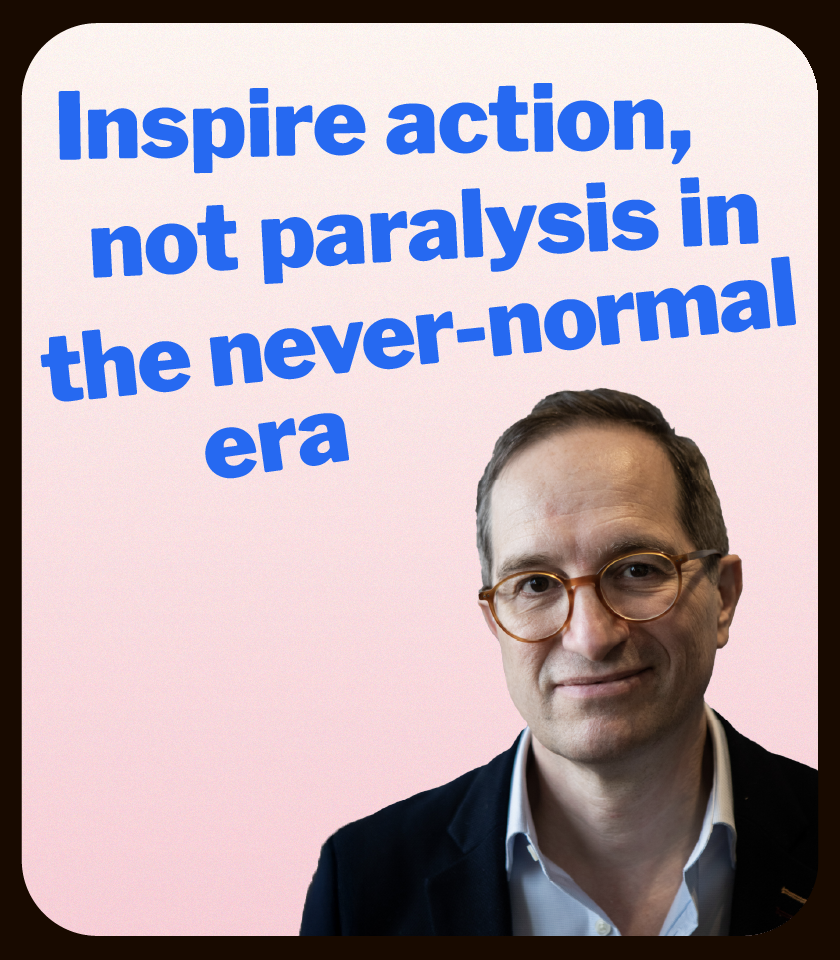Why the ‘Fixed and Flow’ agency model works
Not one agency has it all. With over 14,000 agencies in the industry, each one offers something unique. The overwhelming amount of choice can be stressful for many CMOs searching for the right agency that fits their budget and KPIs. So what can you learn from a marketing giant like P&G, who works with large legacy agencies and up and coming small, Indy shops? Pete’s answer? A fixed and flow model which enables choice and speed. Two things CMOs need most.
With a fixed and flow strategy you can hold onto your established agency relationships and foster new ones. The model provides structured lanes for agencies to focus on specific aspects of the business. The result is fresh thinking from newer agencies and stronger work from existing agency relationships. Call it a win-win.
Why ‘Ditch the Pitch’ is mutually beneficial
Pete has determined that the best way to win a client is by getting rid of what many believe to be the most important part of the process: the pitch. Pitching is time-consuming and costly for both parties, especially agencies. So Pete’s solution is to toss it and seal the deal quicker.
Without the traditional pitch, a lot goes into the research process and the 2 page brief Pete writes for agencies to read and prepare to discuss with the client. Pete’s process doesn’t require agencies to provide a scope of work. It’s based on trust. If it’s a fit, then great! If not, Pete’s clients can see the other 9 agencies he has found.
Inside the P&G’s pitch elevator
How can a small agency with little name recognition win P&G business? P&G’s pitch elevator at Ad Age’s small agency conference is a great place to start. The pitch elevator was created by Pete himself and contributed greatly to his Fixed and Flow model since it offered the CPG giant the chance to find newer agencies to work with. There were some gems and some duds out of the hundreds of small agencies that pitched to P&G. Pete spilled the tea on the best and worst.
The best: A small agency out of Lexington, KY. The main reason they stuck out was that their pitch had a simple and effective framework: “10 reasons you should hire us.” They presented their superpower, which helped set them apart from other agencies. It also helped that they were close to the P&G headquarters in Cincinnati.
The worst: A one-person agency that pinned their success and knowledge on a book they read. A book any of us could read ourselves.
Best of the Super Bowl
Leading the work on a Super Bowl spot is many advertiser's dream, but what about three of them? Pete Carter did just that, developing iconic spots such as the “Talking Stain” for Tide in 2008, the “Miracle Stain” for Tide in 2013, and while not technically a Super Bowl spot since they didn’t purchase a national spot (but was still recognized as one of the best Super Bowl ads that year) Pantene’s “Strong is Beautiful” which won several Cannes Lions.
We asked him to pick a favorite. While it was tough to pick one above the rest, Pete explained that the “Talking Stain” spot from Tide was his favorite since the process to greenlight was quick and the messaging of the insight was very effective. Check it out here.
Selling lines
“Gillette the best a man can get”,”‘if it’s got to be clean, it’s got to be Tide”, and “the quicker picker-upper.” These selling lines are instantly recognizable in advertising. Lines like these are what give Pete his famous “tingles.” These are lines that sell the product, they are not just tag lines like Nike’s “just do it”, rather they are purposefully crafted to call people to buy. Pete explains that a great selling line has a huge impact on sales. It can transcend a single campaign and live on for decades.
Want more insider knowledge from a Harley Procter winner? You’re going to have to listen to the full episode. Drop your favorite takeaways on our social posts and be sure to leave a review wherever you listen to your podcasts. See you next month.👋
ABOUT THE QUESTION EVERYTHING PODCAST
Part interview, part therapy, part Price Is Right, the Question Everything podcast puts your favorite CMOs and thought leaders in the hot seat. That means while they're facing off against our game board, you'll learn from the successes and failures of the best in the biz who were daring enough to be curious.




.png)



